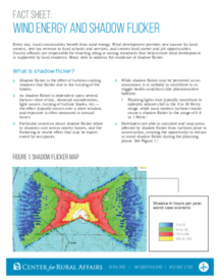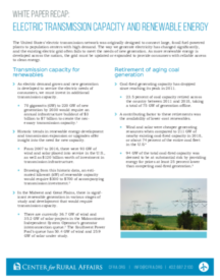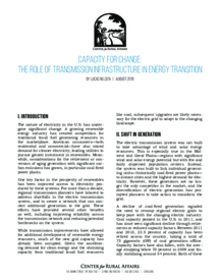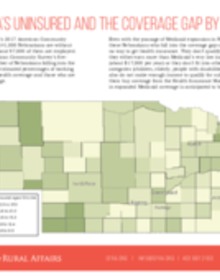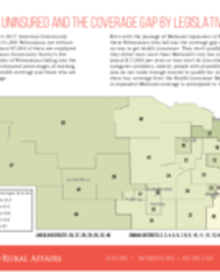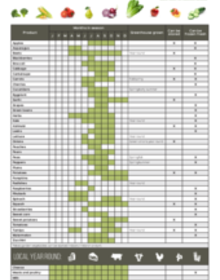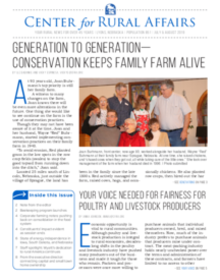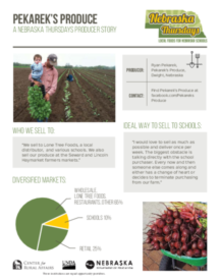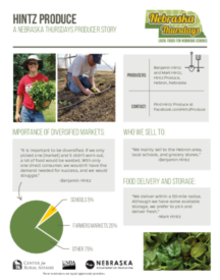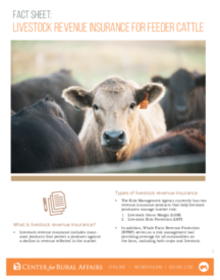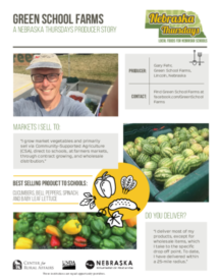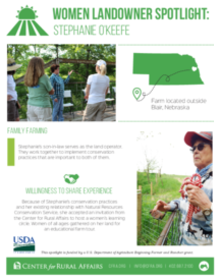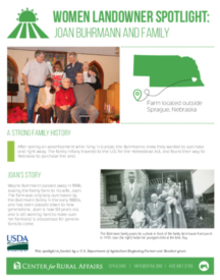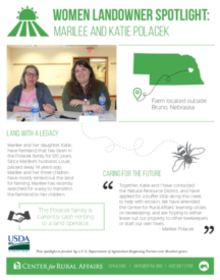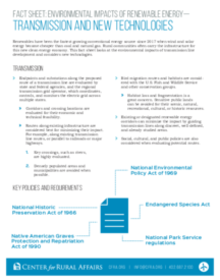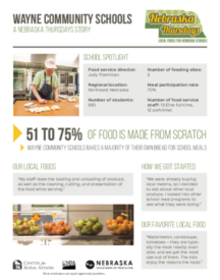We aren't afraid of the weeds. The people living in rural America deserve a serious and in-depth look at the issues and forces impacting their communities.
Every day, rural communities benefit from wind energy. Wind development provides new income for landowners, new tax revenue to fund schools and services, and creates local career and job opportunities. County officials are responsible for enacting siting or zoning standards that help ensure wind...
- Policy
Every day, rural communities benefit from wind energy. Wind development provides new income for landowners, new tax revenue to fund schools and services, and creates local career and job opportunities. County officials are responsible for enacting siting or zoning standards that help ensure wind...
- Policy
The United States’ electric transmission network was originally designed to connect large, fossil fuel-powered plants to population centers with high demand. The way we generate electricity has changed significantly, and the existing electric grid often fails to meet the needs of new generation. As...
- Policy
The nature of electricity in the U.S. has undergone significant change. A growing renewable energy industry has created competition for traditional fossil fuel generating resources in the marketplace. American consumers—both residential and commercial—have also voiced demand for cleaner electricity...
- Policy
The U.S. Census Bureau’s 2017 American Community Survey estimates about 141,000 Nebraskans are without health insurance, and about 97,000 of them are employed. This map includes American Community Survey’s five-year estimate of the number of Nebraskans falling into the coverage gap, as well as...
- Policy
The U.S. Census Bureau’s 2017 American Community Survey estimates about 141,000 Nebraskans are without health insurance, and about 97,000 of them are employed. This map includes American Community Survey’s five-year estimate of the number of Nebraskans falling into the coverage gap, as well as...
- Policy
When are local foods available to add to school menus? Center for Rural Affairs partnered with Nebraska Department of Education - Nutrition Services, Nebraska Dry Bean Commission, Midwest Dairy, and Nebraska Beef Council to create a year-round Farm to School program, Nebraska Thursdays. This Produce...
- Farm and Food
- Small Towns
In this edition, you will read about Joan Burhmann, a 93-year-old working to make sure the next generation has a fair chance at rural life.
- Small Towns
Ryan Pekarek, of Pekarek’s Produce, near Dwight, Nebraska, sells vegetables to area schools. Who we sell to “We sell to Lone Tree Foods, a local distributor, and various schools. We also sell our produce at the Seward and Lincoln Haymarket farmers markets.” Ideal way to sell to schools “I would love...
- Small Towns
Benjamin Hintz and Mark Hintz, of Hintz Produce, near Hebron, Nebraska, sell vegetables to area schools. Importance of diversified markets “It is important to be diversified. If we only picked one [market] and it didn’t work out, a lot of food would be wasted. With only one direct consumer, we...
- Small Towns
What is livestock revenue insurance? Livestock revenue insurance includes insurance products that protect a producer against a decline in revenue reflected in the market. Types of livestock revenue insurance The Risk Management Agency currently has two revenue insurance products that help livestock...
- Farm and Food
Mark Roh, of Abie Vegetable People and co-owner of Lone Tree Foods, provides fresh vegetables to local schools. Abie Vegetable People is located near Abie, Nebraska. Favorite aspect of selling to schools “The volume of food we are supplying and knowing that we can provide better food for the kids...
- Small Towns
Gary Fehr, Green School Farms, near Lincoln, Nebraska, sells vegetables to area schools. Markets I sell to “I grow market vegetables and primarily sell via Community-Supported Agriculture (CSA), direct to schools, at farmers markets, through contract growing, and wholesale distribution.” Best...
- Small Towns
What is community inclusion? Community inclusion is about bringing people together, learning from each other, and enriching our communities through our collective differences. We accomplish this by identifying and creating opportunities to bring more awareness and engagement across cultural divides...
- Small Towns
Stephanie O'Keefe's farm is located outside Blair, Nebraska. Family farming Stephanie’s son-in-law serves as the land operator. They work together to implement conservation practices that are important to both of them. Willingness to share experience Because of Stephanie’s conservation practices and...
- Farm and Food
The Joan Buhrmann and family farm is located outside Sprague, Nebraska. A strong family history After seeing an advertisement while living in Europe, the Buhrmanns knew they wanted to purchase land right away. The family initially traveled to the U.S. for the Homestead Act, and found their way to...
- Farm and Food
Marilee and Katie Polacek's farm is located outside Bruno, Nebraska. Land with a legacy Marilee and her daughter, Katie, have farmland that has been in the Polacek family for 120 years. Since Marilee’s husband, Louie, passed away 14 years ago, Marilee and her three children have mostly rented out...
- Farm and Food
Renewables have been the fastest growing energy source since 2017 when costs reached a key milestone. Costs dropped enough to make wind and solar the cheapest form of conventional energy. Rural communities often carry this infrastructure. This fact sheet looks at the environmental impacts of wind...
- Policy
Renewables have been the fastest growing conventional energy source since 2017 when wind and solar energy became cheaper than coal and natural gas. Rural communities often carry the infrastructure for this new clean energy economy. This fact sheet looks at the environmental impacts of transmission...
- Policy
51 to 75% of food is made from scratch. Wayne Community Schools bakes a majority of their own bread for school meals. School spotlight Food service director: Judy Poehlman Regional location: Northeast Nebraska Number of students: 930 Number of feeding sites: 2 Meal participation rate: 70% Number of...
- Small Towns



